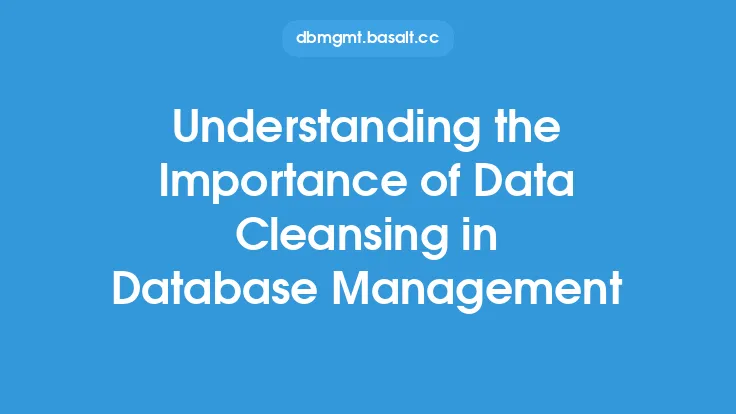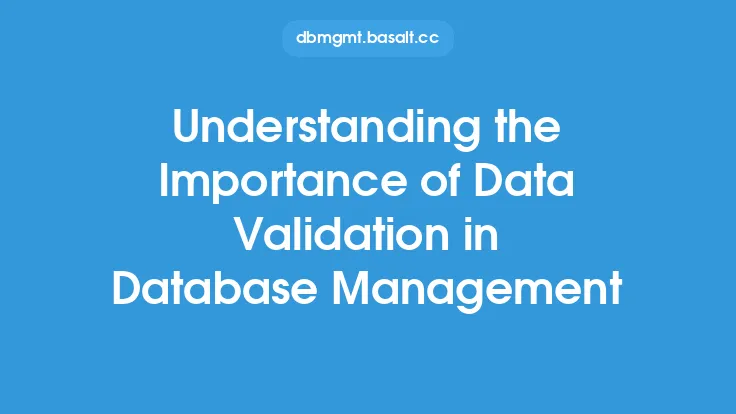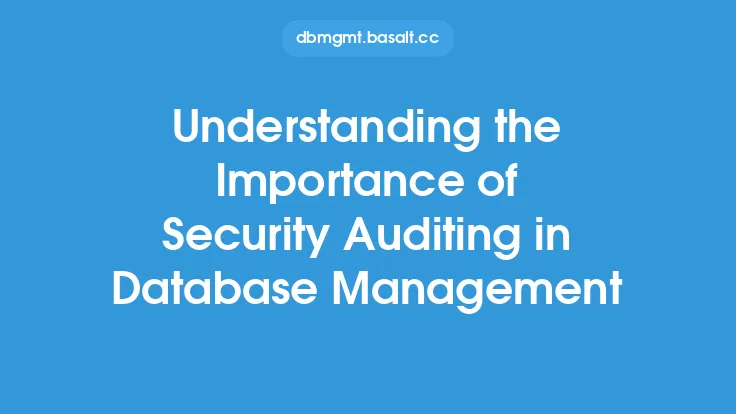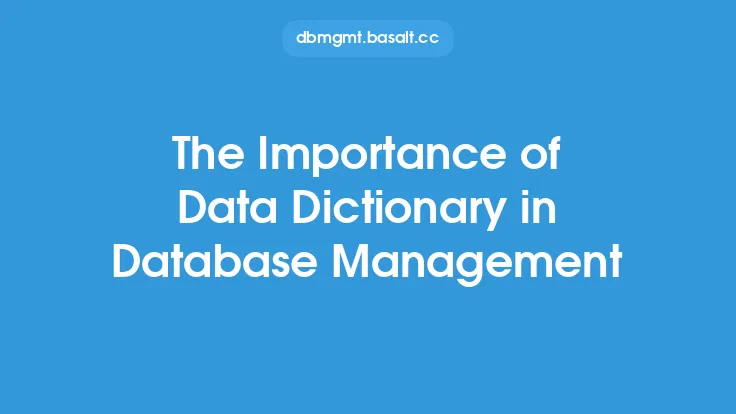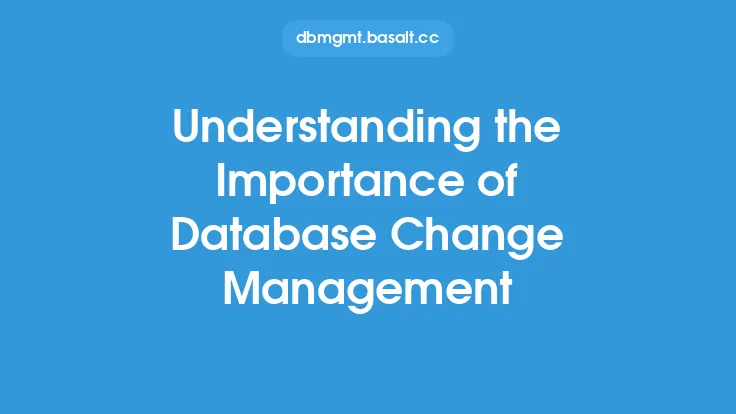Data standardization is a critical aspect of database management that involves establishing a common format for storing and representing data. This process ensures that data is consistent, accurate, and reliable, making it easier to manage, analyze, and share. In the context of data normalization, data standardization plays a vital role in ensuring that data is properly organized and structured, which is essential for maintaining data integrity and supporting business decision-making.
Introduction to Data Standardization
Data standardization is the process of defining and implementing a set of rules and guidelines for storing and representing data in a database. This includes establishing standards for data formats, data types, and data values, as well as defining relationships between different data entities. The goal of data standardization is to ensure that data is consistent and accurate, which is critical for supporting business operations, decision-making, and analytics.
Benefits of Data Standardization
Data standardization offers several benefits, including improved data quality, increased data consistency, and enhanced data sharing and collaboration. Standardized data is easier to manage and maintain, which reduces the risk of data errors and inconsistencies. Additionally, standardized data is more reliable and trustworthy, which is essential for supporting business decision-making and analytics. Data standardization also facilitates data sharing and collaboration, as standardized data can be easily shared and integrated with other systems and applications.
Data Standardization Techniques
There are several data standardization techniques that can be used to establish a common format for storing and representing data. These techniques include data profiling, data cleansing, and data transformation. Data profiling involves analyzing data to identify patterns, trends, and relationships, which can help to identify areas where standardization is needed. Data cleansing involves removing errors, inconsistencies, and duplicates from data, which can help to improve data quality and accuracy. Data transformation involves converting data from one format to another, which can help to establish a common format for storing and representing data.
Data Standardization and Data Normalization
Data standardization is closely related to data normalization, which involves organizing data into a structured and consistent format. Data normalization involves applying a set of rules and guidelines to ensure that data is properly organized and structured, which is essential for maintaining data integrity and supporting business decision-making. Data standardization is an important aspect of data normalization, as it ensures that data is consistent and accurate, which is critical for supporting business operations and decision-making.
Data Standardization and Database Design
Data standardization is also closely related to database design, which involves creating a database structure that supports the storage and management of data. A well-designed database structure is essential for ensuring that data is properly organized and structured, which is critical for maintaining data integrity and supporting business decision-making. Data standardization plays a critical role in database design, as it ensures that data is consistent and accurate, which is essential for supporting business operations and decision-making.
Challenges and Limitations of Data Standardization
While data standardization is a critical aspect of database management, it can also be challenging to implement and maintain. One of the main challenges of data standardization is ensuring that data is consistent and accurate, which can be difficult to achieve, especially in large and complex databases. Additionally, data standardization can be time-consuming and resource-intensive, which can make it difficult to implement and maintain. Furthermore, data standardization may require significant changes to existing database structures and applications, which can be difficult to implement and may require significant resources and investment.
Best Practices for Implementing Data Standardization
To ensure that data standardization is effective, it is essential to follow best practices for implementing data standardization. These best practices include establishing clear standards and guidelines for data storage and representation, using data profiling and data cleansing techniques to improve data quality and accuracy, and using data transformation techniques to establish a common format for storing and representing data. Additionally, it is essential to ensure that data standardization is aligned with business operations and decision-making, and that it is properly maintained and updated over time.
Conclusion
In conclusion, data standardization is a critical aspect of database management that involves establishing a common format for storing and representing data. Data standardization ensures that data is consistent, accurate, and reliable, making it easier to manage, analyze, and share. While data standardization can be challenging to implement and maintain, it offers several benefits, including improved data quality, increased data consistency, and enhanced data sharing and collaboration. By following best practices for implementing data standardization, organizations can ensure that their data is properly organized and structured, which is essential for supporting business operations, decision-making, and analytics.
